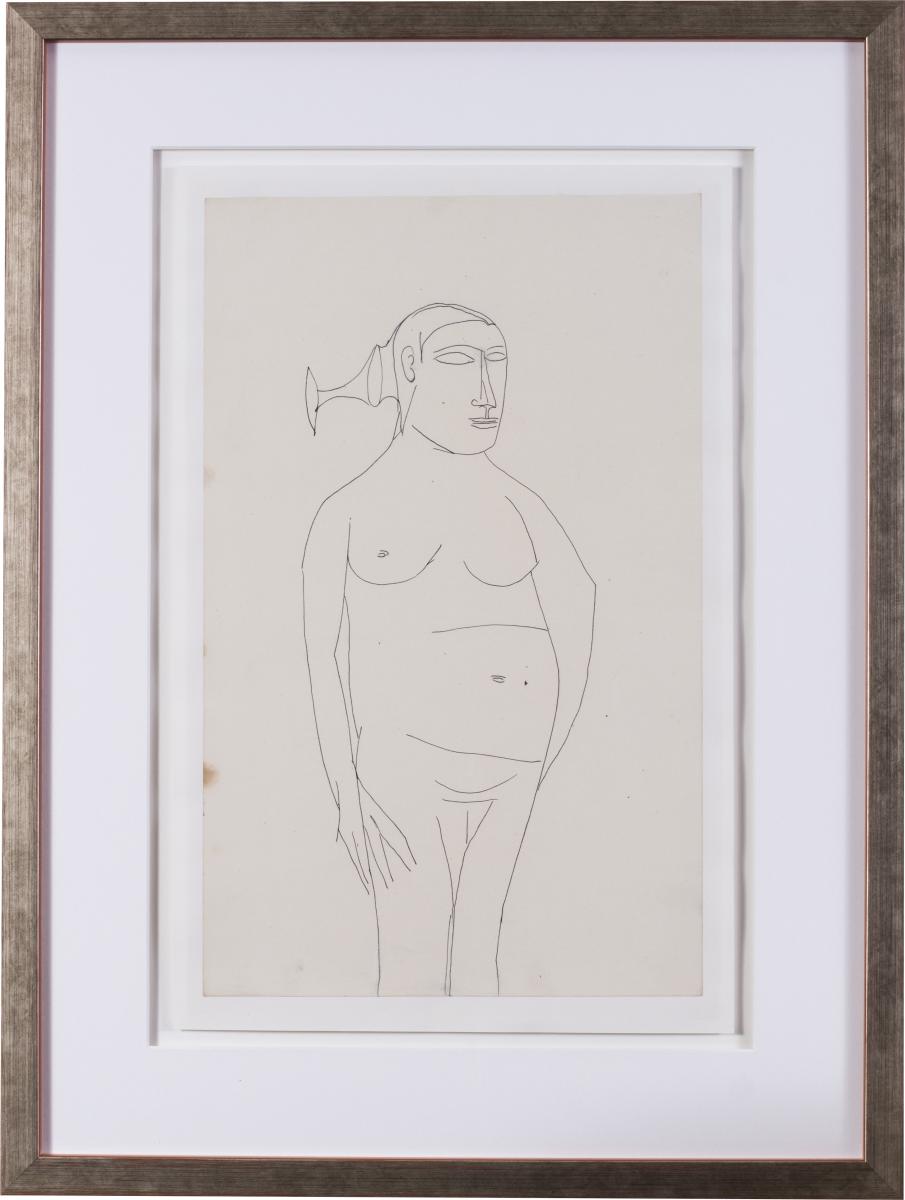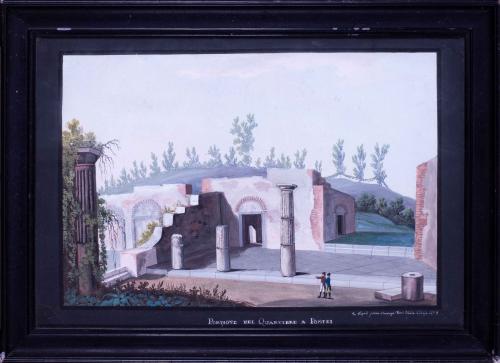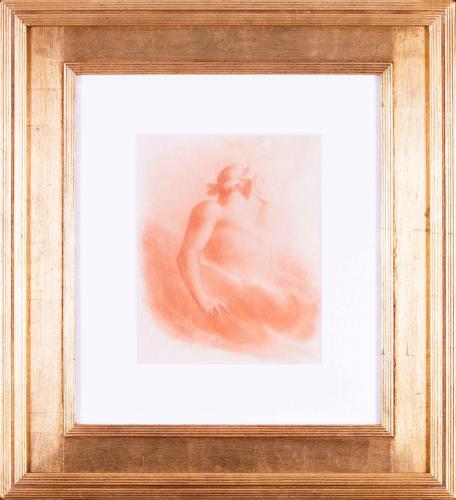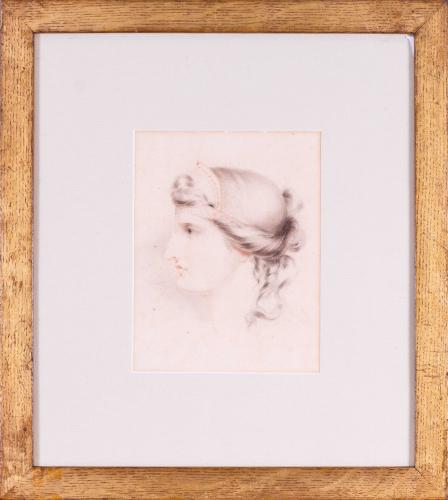

This object is eligible for a Certificate of BADA Provenance
The BADA Standard
- Since 1918, BADA has been the leading association for the antiques and fine art trade
- Members are elected for their knowledge, integrity and quality of stock
- Our clients are protected by BADA’s code of conduct
- Our dealers’ membership is reviewed and renewed annually
- Bada.org is a non-profit site: clients deal directly with members and they pay no hidden fees
Francis Newton Souza (Indian, 1924 – 2002)
Osalisque II
Pen on paper
15.3/4 x 9.7/8 in. (40 x 25 cm.)
Provenance: The artist’s wife Maria, Nee Figueiredo, gifted to her nephew
These examples were saved from being burnt on a bonfire by the artist’s nephew. Maria, Souza’s wife was sick and tired of his affairs and was burning many of his studies in the garden when her nephew intervened. These studies are among those saved. Others saved at the same time were executed in 1952 and is fairly certain that these are from the same period.
Layered, dynamic, brutally humanistic, the paintings of Francis Newton Souza reveal an artist who never stopped experimenting throughout his six-decade career, perpetually seeking new modes and languages of painterly expression.
A founder of the inestimably important Progressive Artists’ Group in Mumbai, he wrote the group’s manifesto and was a crucial intellect in the group’s formation and articulation—as, indeed, he was for Modern Indian art on the whole. He holds an unshakeable place among India’s most important and influential Modern painters.
Despite the vast sweep of painting styles encompassed by his oeuvre, Souza’s work is unified by an overt sensuality, sometimes violent, sometimes sexual, but devoted above all to the human body as a wild, fragile, noble and corruptible object. He is hardly the first Catholic-raised artist to fixate on the body.
Nudes, sex and violence dominate even his most abstract work, but he rejected the notion he was too aggressive toward his subjects, particularly women. “No artist goes knocking down things,” he said, “..he is interested in one thing, and that is aesthetics, the science of beauty. And my whole life has been the quest for beauty. Beauty is the final nuance of nature. I am searching for that beauty. Beauty is not in the eye of the beholder, but in the cultivated eye.”
Born in Saligao, in Goa, India, in 1924, Souza studied at the Sir J.J. School of Art in Mumbai, but was expelled for his participation in the Quit India Movement. In 1949, he left for London where he supported himself doing occasional journalism, writing articles for magazines like Studio International and Art News and Review.
He rocketed to international fame in the 1950s following a 1955 solo show at London’s Gallery One, in which all of his paintings were sold. The next decade saw a bevy of solo shows, a 1962 monograph, an Italian government-sponsored stint in Italy, and acquisitions by London’s Tate Gallery.
Backed by the patronage of Eugene Schuster, of the London Arts Group gallery, in Detroit, Souza migrated to New York in 1967, where he received the Guggenheim International Award. Success waxed and waned in the years that followed, though his reputation was ultimately cemented.
Throughout his life, his work appeared in the world’s major art spaces, including the Halles de L’lle in Geneva, the Hirschhorn Museum in Washington, D.C., Bose Pacia in New York, the Royal Academy of Arts in London and many others in Paris, London, Dubai and New Delhi.
He died on a visit to his native country, in Mumbai, and was buried there in 2002. Since his death, his work has appeared in dozens upon dozens of exhibitions around the world.
Dimensions
40 x 25 cmThe BADA Standard
- Since 1918, BADA has been the leading association for the antiques and fine art trade
- Members are elected for their knowledge, integrity and quality of stock
- Our clients are protected by BADA’s code of conduct
- Our dealers’ membership is reviewed and renewed annually
- Bada.org is a non-profit site: clients deal directly with members and they pay no hidden fees




